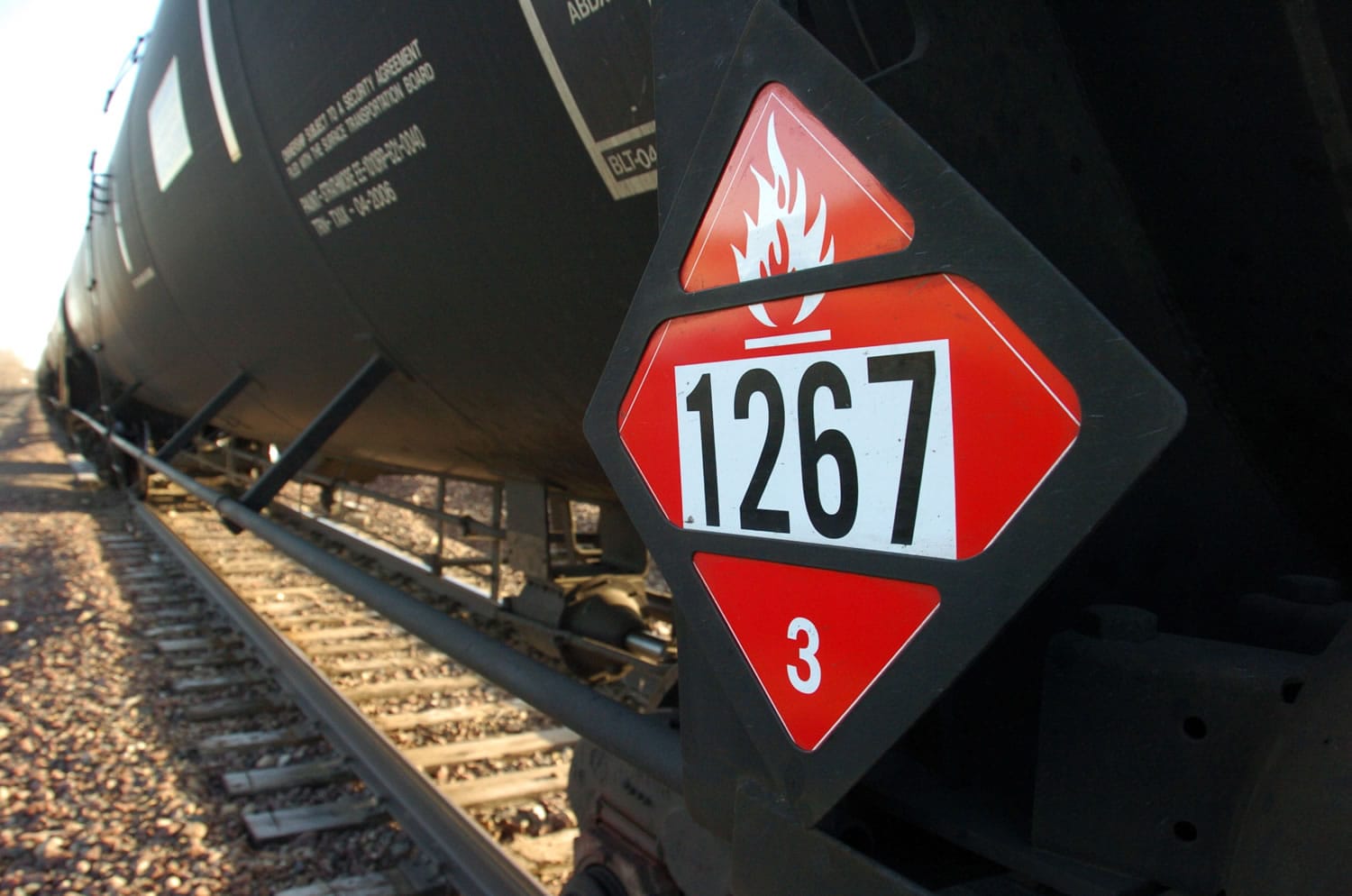WOLF POINT, Mont. — It’s tough to miss the trains hauling crude oil out of the Northern Plains. They are growing more frequent by the day, milelong processions of black tank cars that rumble through wheat fields and towns, along rivers and national parks.
As common as they have become across the U.S. and Canada, officials in dozens of towns and cities where the oil trains travel say they are concerned with the possibility of a major derailment, spill or explosion, while their level of preparation varies widely.
Stoking those fears was the July crash of a crude train from the Bakken oil patch in Lac Megantic, Quebec — not far from the Maine border — that killed 47 people. A Nov. 8 train derailment in rural Alabama where several oil cars exploded reinforced them.
“It’s a grave concern,” said Dan Sietsema, the emergency coordinator in northeastern Montana’s Roosevelt County, where oil trains now pass regularly through the county seat of Wolf Point. “It has the ability to wipe out a town like Wolf Point.”
The number of carloads hauled by U.S. railroads has surged in recent years, from 10,840 in 2009 to a projected 400,000 this year.
Despite the increase, the rate of accidents has stayed relatively steady. A review of federal hazardous material accident records show most of those incidents involved small quantities of oil.
Railroads say 99.997 percent of hazardous materials shipments reach destinations safely. Representatives said they work hard to prevent accidents and make sure emergency responders are prepared, by training about 20,000 firefighters and others annually.
“It’s not something to be afraid of,” said Union Pacific CEO Jack Koraleski. He said there is not a safer option than rail.
Federal officials who oversee railroads said they’ve responded to the boom in oil trains by beefing up rail car inspections in oil-producing states such as North Dakota. Tougher safety standards are being considered for the tank cars that carry oil.
But the accident records kept by the U.S. Department of Transportation point to the daunting size of that task. Oil trains are now active in virtually every corner of the country, and since 2008, crude releases from rail cars have been reported in 29 states.
The potential for a major accident looms ominously for emergency officials. Urban areas and towns near railroad facilities are better prepared, while rural officials know they may be on their own in the first crucial hours after an accident.
Trains headed west out of the Bakken oil patch in North Dakota snake their way along the Missouri River and slice through towns large and small before crawling over the Continental Divide at Glacier National Park to reach coastal refineries.
One of the first places trains heading west pass through is Wolf Point, an agricultural town of about 2,600 people on the Fort Peck Indian Reservation.
On a line historically dominated by grain and freight shipments, crude trains are now a daily sight. Horns announce their approach as locomotives pulling 3 million gallons of crude per shipment pass just a block from the town’s business district and only yards from the public high school.
Emergency officials in Montana and beyond generally praised the railroad industry’s responsiveness to derailments.
BNSF Railway, the dominant railroad in the Bakken, maintains its own hazardous materials emergency crews, totaling more than 200 personnel at 60 sites scattered across the country. The other major railroads take similar precautions and offer specialized training to local firefighters.
Yet corporate responsibility can only do so much, said Sietsema.
Like most rural communities, Wolf Point has an all-volunteer fire department. The nearest hazardous materials teams are stationed on the other side of the state, six to eight hours away. There’s no containment boom on hand if oil entered one of the Missouri River tributaries crossed by the rail line.
As for controlling an oil-fueled fire, Wolf Point’s fire department would use up its supply of specialized foam in a matter of minutes, said Chris Dschaak, Wolf Point’s mayor-elect and a volunteer firefighter.
Similar limitations exist for fire departments across the U.S., said Alan Finklestein, a fire marshal in Ohio who conducts hazardous materials training for government agencies and first responders.



